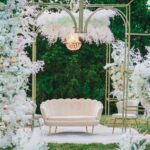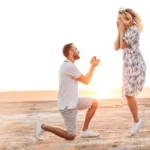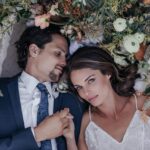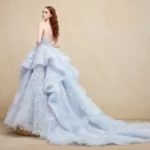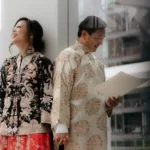 Vintage or vintage-inspired wedding dresses offer brides a chance to wear something unique on their big day. Today’s Bride put together a list of styles from the 19th century to the 1970s, to help you introduce a vintage look into your bridal attire.
Vintage or vintage-inspired wedding dresses offer brides a chance to wear something unique on their big day. Today’s Bride put together a list of styles from the 19th century to the 1970s, to help you introduce a vintage look into your bridal attire.
Victorian glamour: 19th century
The Victorians were best known for their opulent style. If you’re trying to evoke this ritzy time period, look at dresses with full-length tiered skirts with an emphasis on tight waists.
Is your idea of a Victorian wedding more Jane Eyre and less extravagant? Look at dresses with long or half-sleeves and an off-the-shoulder or portrait neckline.
If you prefer to keep the Victorian influence solely on your accessories, consider an ornately-detailed veil or silk ballroom gloves.
Welcome to the 20th century: 1900-1919
Dresses from the early 20th century had clean, simple lines – often with cinched waists with wide bands, half-sleeves, and intricate lace detailing.
When looking for accessories from this time period, check out T-bar shoes (think Mary-Janes but with a T-strap), which was introduced in 1914. Hats were also a big deal, ranging in styles from a wide-brimmed to a cloche, which was a fitted bell-shaped hat that was introduced again in the next decade.
Roaring 20s: 1920-1929
Wedding dresses in the 1920s often resembled the flapper style of the times. The garments challenged the modesty of the previous decades with bare arms and deep V-necklines on both the front and back of the dress. Corsets disappeared and dresses were loosely fitted. Most were three-quarter length, but the more daring were above the knees. Many had intricate beading, low waists and flapper-style skirts.
If you’re planning to bring back the Roaring 20s for your wedding, get glamorous accessories. Add a long pearl necklace, a dramatic headpiece with feathers or a small veil.
Art deco: 1930-1939
Art deco-inspired wedding dresses were all the rage in the 1930s, and were often floor-length, empire or column-style gowns in ivory silk. Detailing was typically found around the neckline (beading, lace, or even a delicate collar), and the sleeves were scrunched or wide.
Instead of the typical veil, why not incorporate the 1930s with a white flower-garland on your head.
Back to basics: 1940-1949
Wedding dresses in the ’40s were less elaborate than in decades before and after because of World War II. If you’re planning to make a nod to the 1940s, look at full-length column gowns with an elegant cowl neckline.
Add an over-the-shoulders lace shawl for some silver screen-inspired charm.
Old Hollywood glamour: 1950-1959
The 1950s were often associated with Hollywood and glamour. The decade saw a rise in strapless dresses with bodices and skirts that flared from the waist, typically in A-line style. The waistline of a dress typically had a sash, and it was very common to see the bodices detailed with beading, sequins, or pleating.
Don’t be afraid to get all done up if you’re going for a ‘50s-style look. Try a fur shawl or headband, to bring some of the old Hollywood style to your big day.
Swingin’ sixties: 1960-1969
Wedding dresses at this time were, like the decade they came from, a little rebellious and untraditional. Both the beaded mini-dress (similar, in fact, to what most people associate with flapper style) and the long-sleeve, loose-fitting wedding dresses were popular during this time.
If you loved Twiggy’s style in the 60s, go for a dress with a boat neckline and empire waistline, that scoops low at the back.
Want to wear a hat on your big day? Try a pillbox hat, to evoke the style of Jackie Kennedy and seen today on TVs Mad Men.
Flower children: 1970-1979
The 1970s popularized the classic maxi-dress, with an empire waistline, billowing full-length skirt, and long or short sleeves. Some dresses came in faint geometric prints, and some had beading around the bodice.
Show off your inner flower child with a 1970s-style boho headband.


